5 of the best stadiums coming to European football.
A couple of weeks ago, I wrote a post on some of the new stadiums coming to the MLS. I went into detail on the specs as well as design decisions made for each one. Now, with a new day and age of football sweeping the European game, it is time for iconic stadiums to get much-needed makeovers. The stadiums on this list are both renovations of original sites as well as entirely new structures.
1. Camp Nou, Barcelona
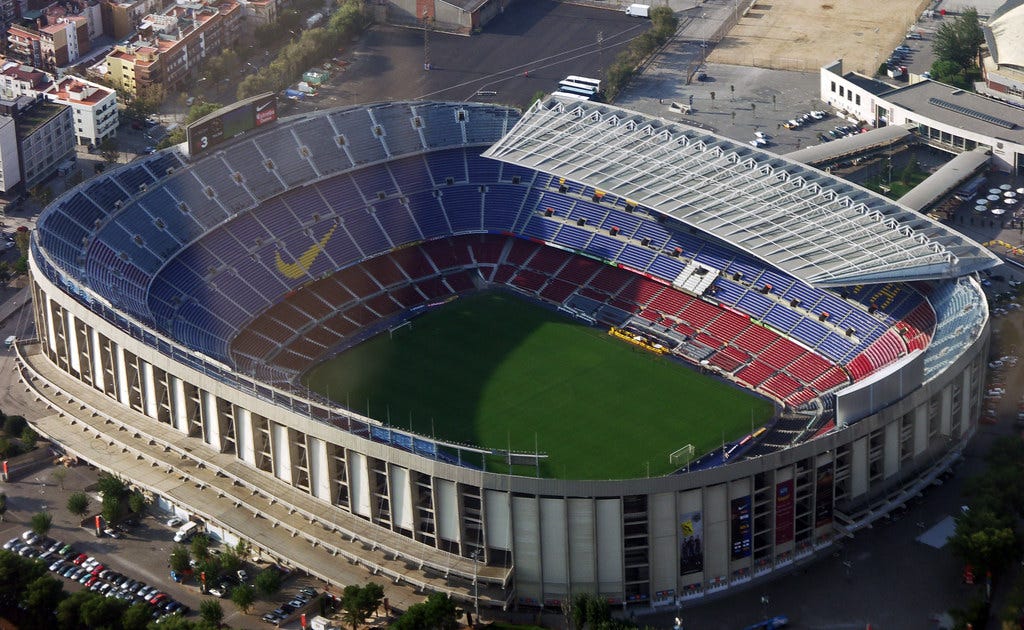
picture via flickr.com
Already a massive stadium, the home of Barcelona, has had numerous plans of renovation over the years. The already 99,000 seater stadium would be expanded another 6,000 seats, further cementing its title as the biggest football stadium in Europe. Along with the added capacity, the stadium is set to receive a full exterior renovation as well as the addition of a roof to cover the entirety of the stands. Outside the stadium, the club plans on building a 6,000 seater stadium for Barcelona’s second team, Barca B. The Stadium will be named after Dutch and club legend Johan Cruyff. Also, the club will build a 12,000 seater indoor arena perfect for futsal, volleyball, and basketball. The new Camp Nou is set to open its doors in 2022 as one of the world’s biggest clubs gets just a little bit bigger.
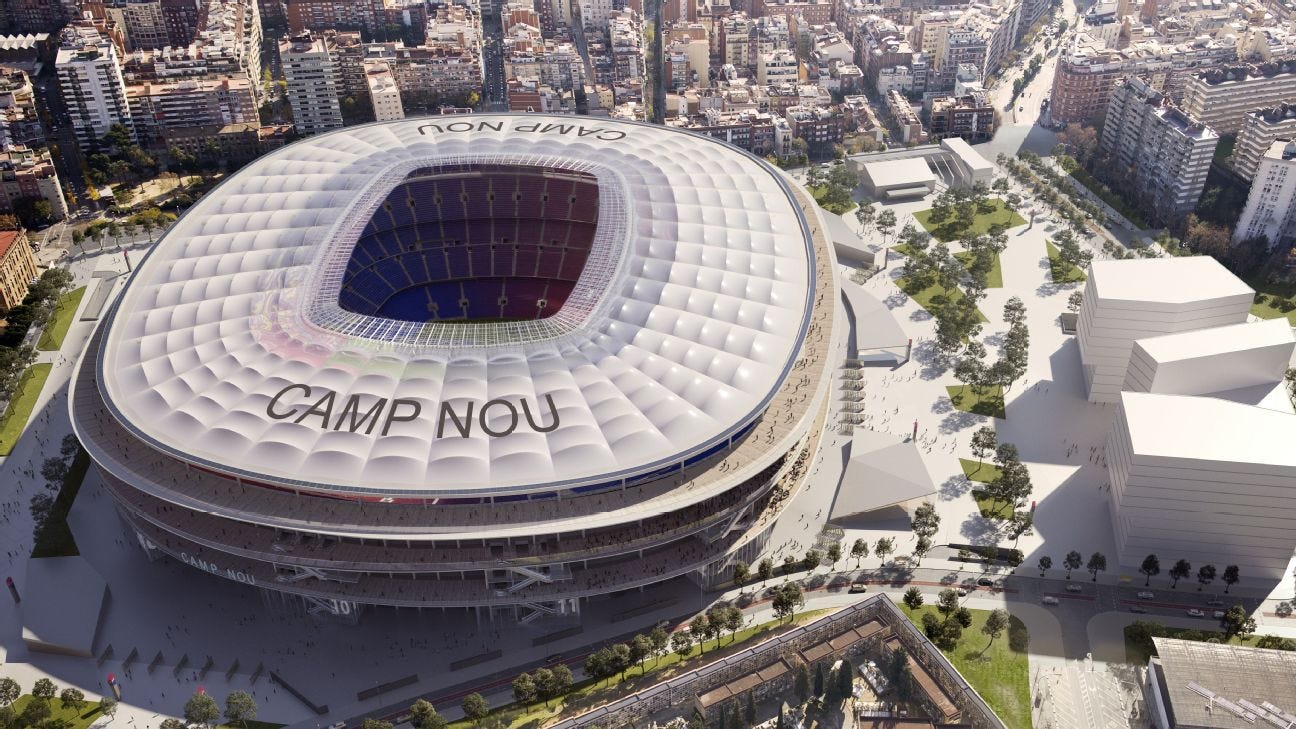
picture via fcbarcelona.com
2. Stadio Bernabeu, Real Madrid

picture via realmadrid.com
You can’t talk much about Barcelona without hearing the name of their fiercest rivals Real Madrid. Now that Barcelona has renovations to their home in the works, Madrid has released plans for improvements to theirs. However, unlike Barcelona Real Madrid will not increase the capacity of their stadium, which currently sits at 81,000. Instead, Los Blancos will spend 550 million dollars to give the Bernabeu a sleek new exterior wrap as well as a retractable roof. A 360-degree jumbotron, similar to the ones seen in American sporting venues such as Mercedes-Benz Stadium in Atlanta and the soon to be opened SoFi Stadium in Los Angeles will be added as well. Work has already begun and is set to finish around the same time as Camp Nou in 2022.

picture via realmadrid.com
3. New Milan Stadium, Inter and AC Milan
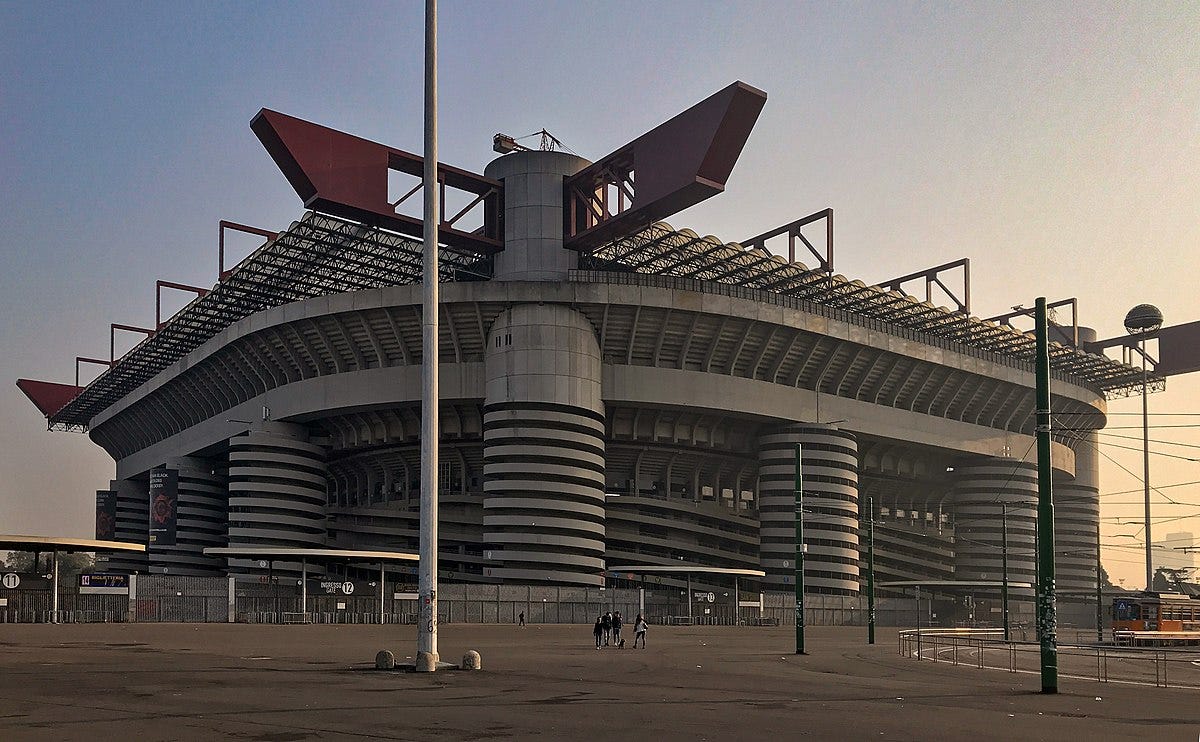
picture via wikipedia.org
When news of the plans to demolish the iconic San Siro and build a modern replacement surfaced, a lot of Inter and AC Milan fans were not too happy. Arguably one of the most recognizable stadiums in the world’s game, the San Siro has been host to nine World Cup matches through two separate tournaments, four European Cup finals, and been the setting for numerous big-name concerts such as Bob Marley, Madonna, and the Rolling Stones. However, all good things must come to an end. There are two prominent designs for the replacement stadium, which will not carry on the San Siro name. First, being a cathedral style stadium with massive pillars surrounding the exterior to give the stadium a similar look and feel to that of its predecessor. The second design has a much more modern feel, with long swooping lines that cross in the center as the two halves of the stadium are lit separately by the colors of its two tenants. The final project is set to be ready by 2023. It will always be just as sad to see such historical venues leave the game of football as when we say goodbye to another legendary player. Though the San Siro’s time is coming to an end, it will always live on in the hearts of Milan fans.

picture via thegaurdian.com
4. Bramley-Moore Dock Stadium, Everton
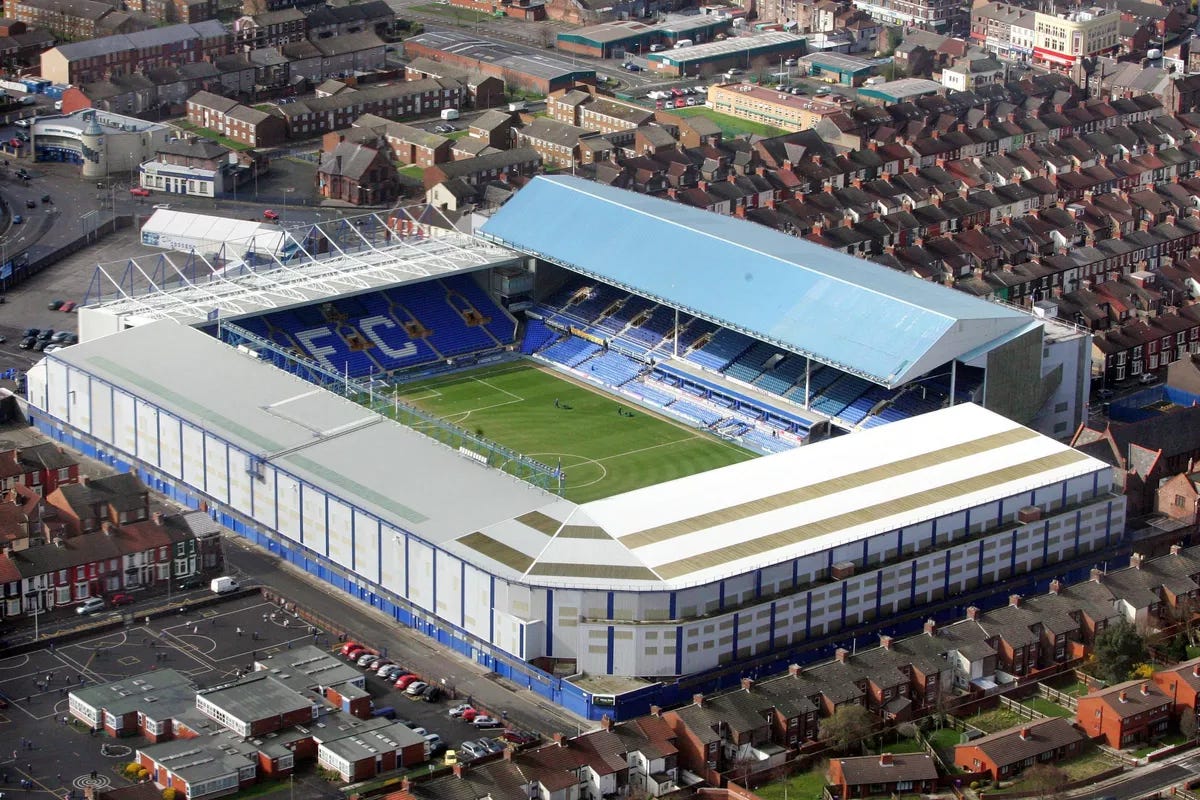
picture via royalbluemersey.sbnation.com
Heading to England, Everton’s Goodison Park has been set for a replacement for some time now. In November 2017, the club signed a 200-year lease to the docks alongside the River Mersey. Set to have a capacity of 52,000, construction on the Bramley-Moore Dock Stadium is in hopes to start in early 2020. The BMD Stadium is set to be complete and start hosting Premier League games in 2023. The club also will have an option to expand the stadium another 10,000 seats if it does well selling out. A 62,000 seater stadium would mean Everton would play in the third-largest stadium in the Premier League and the fourth-largest in England. Seeing that the Toffees manage to stay up and remain one of the six teams never to be relegated, we could see Premier League football in a beautiful new stadium.

picture via bbc.com
5. Puskas Ferenc Stadion, Hungary
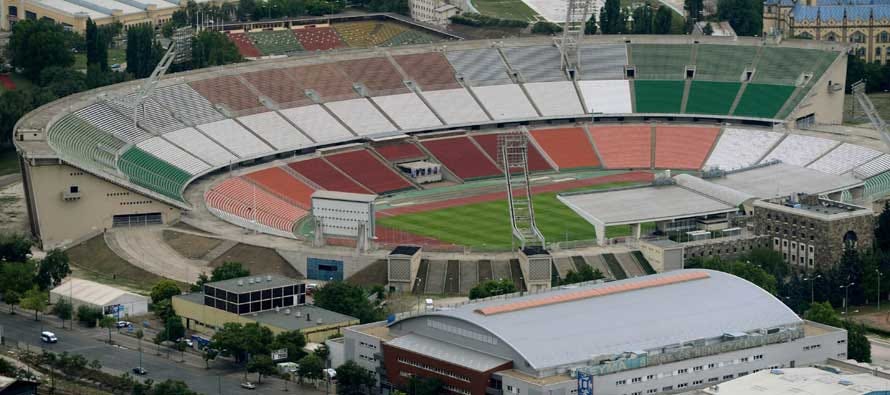
picture via stadiumguide.com
The final entry on this list is set to be completed by early 2020. The Puskas Ferenc Stadion, named after Hungary’s most famous football star, is already the planned host for four matches at Euro 2020 as well as the favorite to host the 2021 Champions League final. The stadium will also serve as the home of the Hungarian national team as it will be located in the capital of Budapest. The Puskas Ferenc Stadion is replacing the old version with the same name as disrepair, and overall spectator experience saw the national team move temporarily to nearby Groupama Arena. The stadium is set to have a capacity of 68,000 and will most likely earn a UEFA five-star rating, which is given to the best stadiums in Europe. We won’t have to wait long to see the technological and overall beauty of one of Europe’s newest stadiums.
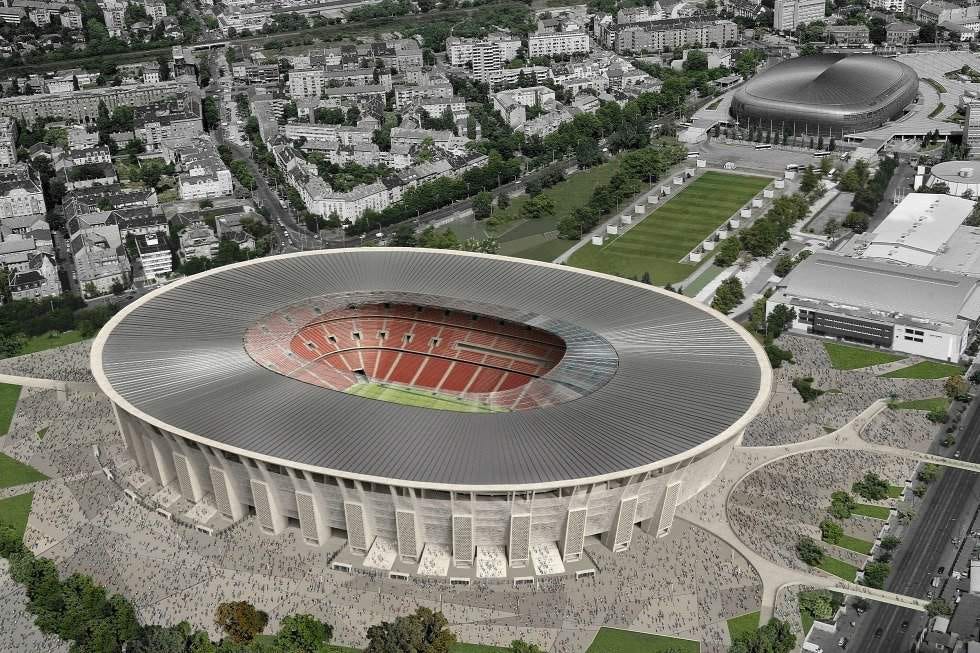
picture via dailynewshungary.com
In just a few years, Europe will be home to many brand new and renovated iconic stadiums. Though it might be sad to see historical stadiums changed or demolished, that change brings on newer, more beautiful stadiums that are far more technologically advanced to take their place and advance the game of football. Thanks for reading.

